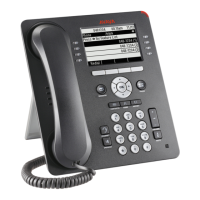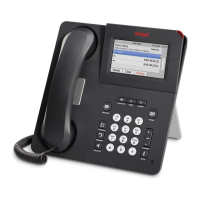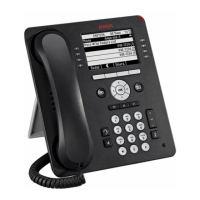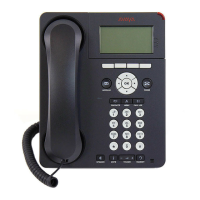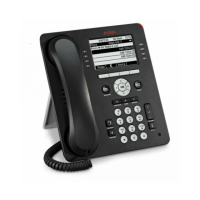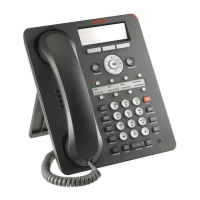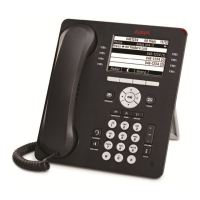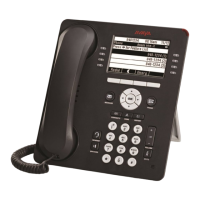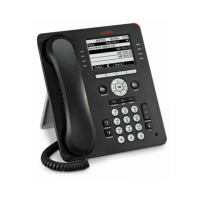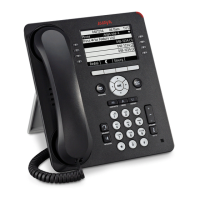Power-Up and Reset Operation (Dynamic Addressing Process)
Issue 1 August 2010 23
3. The internal clock/calendar is set to 0:00:00 Saturday, January 1, 2000 and started.
4. The telephone activates the Ethernet line interface, the PC Ethernet jack, and dial pad input
to allow the invocation of procedures. The activation occurs as soon as possible after
power-up or a reset.
The telephone displays the speed of the Ethernet interface in Mbps, that is,
10, 100, or 1000. The message No Ethernet * to program displays until the software
determines whether the interface is 10 Mbps, 100 Mbps, or 1000Mbps.
Note:
Note:
The Ethernet speed indicated is the LAN interface speed for both the telephone
and any attached PC, assuming the administrator has not disabled the latter
interface by a PHY2STAT setting.
!
Important:
Important:
Pressing * (asterisk) whenever a “* to program“ message displays or
whenever the initialization process can support an interrupt invokes the Craft
Access entry procedure to allow manual settings, but only if the PROCSTAT
(local dialpad procedure status) system value is “0.” The zero PROCSTAT value
provides full access to local procedures. If PROCSTAT is “1” the Craft Access
entry procedure can be invoked only when a “* to program“ message displays
but only the VIEW procedure is available. For information, see Chapter 3:
Local
Administrative (Craft) Options.
5. The IP telephone sends a request to the DHCP server and invokes the DHCP process.
One of the following messages display:
where s is the number of seconds that have elapsed since DHCP was invoked. The
message on the left appears if 802.1Q tagging is off and access to local programming
procedures is not disabled or restricted. (See Chapter 3:
Local Administrative (Craft)
Options for specifics.) The middle message appears if 802.1Q tagging is on and access to
local programming procedures is disabled or restricted. If the left and middle messages
alternate every two seconds, 802.1Q tagging is on. When both messages alternate, access
to local programming procedures is not disabled or restricted. Finally, the message on the
right appears if 802.1Q tagging is off and access to local programming procedures is
disabled or restricted.
6. Determination of the DHCP protocol (IPv4 or IPv6) is done, and the applicable parameters
enabled.
!
Important:
Important:
IPv6 operation is limited to a specific customer set and not for general use.
DHCP: s secs
* to program
DHCP: s secs
VLAN ID = n
DHCP: s secs
